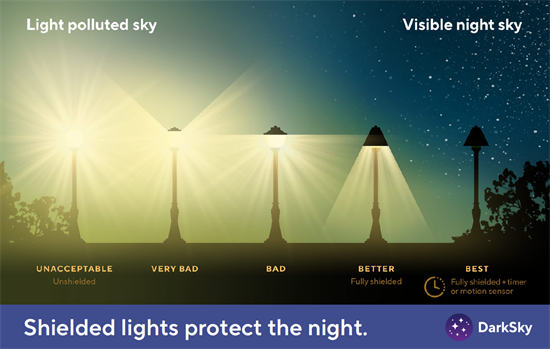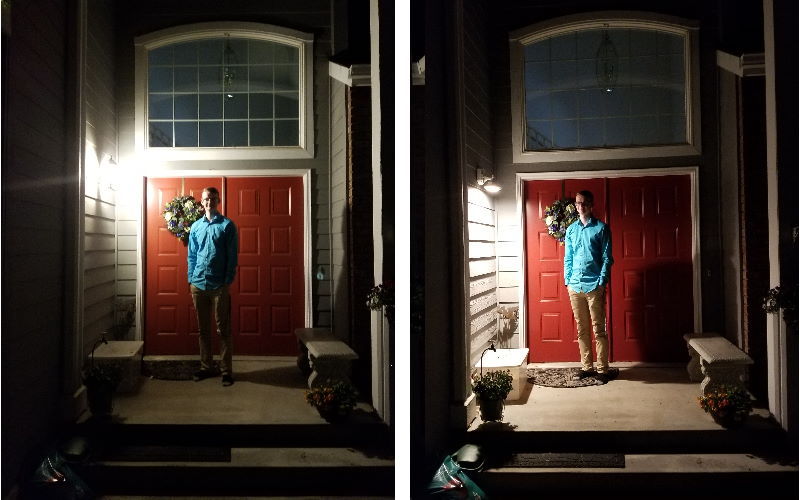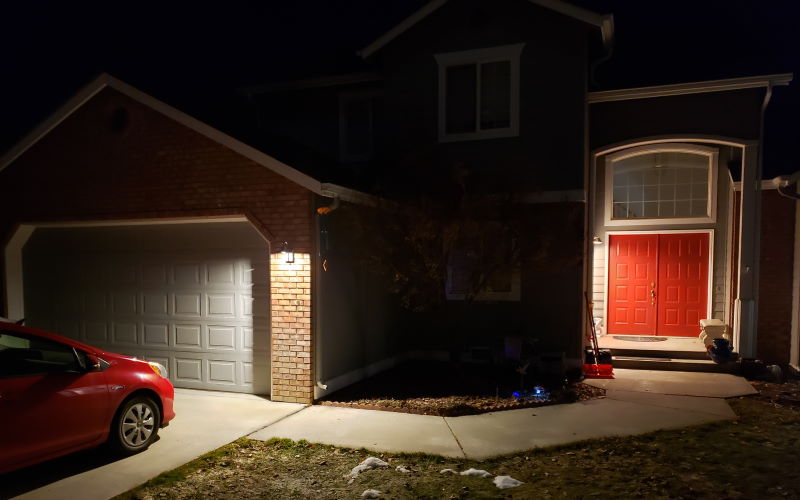by
Customer Energy Solutions
| Dec 07, 2023
Done right, good outdoor lighting can provide safety, security, as well as visual appeal without blasting the night sky or flooding your neighbor’s home with unwanted light.

Outdoor lights block views of the night sky.
Safety
The number one reason for having outdoor lighting is to ensure that people can see where they are going and help us avoid running into people or animals. The light should illuminate the things you want to see, without showing the point source of that light.
For example, think about how hard it is to see something in the road when the headlights from incoming traffic are shining in your eyes. Similarly, stairway and pathway lighting should light the ground where you are walking without shining directly in your eyes.
People also want to feel safe when they are in public spaces at night such as parking lots or on sidewalks. Lighting in these areas should illuminate people in the vicinity and their faces.
Security
Lighting is also used to reduce theft and for people to feel safer at night. Studies have found that there is not a direct relationship between more light equals less crime. It is a complex issue made up of many factors. (Refer to this article for more information: Does darkness increase the risk of certain types of crime?)
It is clear that installing lighting controls that illuminate objects and/or people when motion is detected can have a chilling effect on reducing crime. People are more likely to be deterred if a light comes on to alert other people that there is something or someone in the area. (Refer to this article for more information: Study Shows that Motion Sensor Security Lighting is More Successful in Deterring Criminals than Other Lighting.)
Nature Friendly
Owls and other nocturnal birds will avoid areas lit up by artificial light. Artificial lights can also be harmful to insects that are attracted to the light and then are picked off by birds or bats. Migrating birds can also be severely impacted by artificial lights at night by disrupting their ability to navigate.
Visually Appealing
Holiday lights or other lights shining on buildings are often used to liven them up or make them look more appealing. If you are going to use lights for this purpose, try to follow the lighting recommendations described below.
Restoring the Wonder of the Night Sky
Good outdoor lighting design can instill a sense of awe and wonder of the vastness of the universe by restoring our ability us to see the stars and our own Milky Way galaxy.
Saving Energy
Energy savings are just one of the many benefits of good outdoor lighting. Lights that are turned off or reduced during unoccupied hours will use less electricity and will last longer.
From Bright Night ...
Bad lighting doesn't just diminish our view of the stars. It creates other problems, including:
- Glare and low visibility: Bright, unfocused lights make it harder to see anything but the most brightly lit area in our field of vision.
- Safety concerns: Lights left on all night can actually make crime more likely instead of preventing it.
- Environmental impacts: Light pollution also impacts our ecosystem. Lights at night confuse animals, insects and us, who are all built to follow day and nighttime patterns. In particular, migratory birds and animals that hunt at night are thrown off by artificial lights and
glare, including clouds reflecting city lights from miles away.
... To the Right Light
Strategic outdoor lighting — especially LEDs with smart controls — helps us see better, reduces opportunity for crime, saves energy, and protects wildlife. Before you install or replace outdoor lights, ask yourself these questions:
1. Do You Need It?
- Only use lights with a clear purpose. Skip it if there's no need for a light in an area of your home or business.
- Avoid up-lighting (unless you're calling Batman). Shield and aim your light so it points down to where it is useful.
- Skip unnecessary decorative lighting — or limit it to special occasions.
2. When Do You Need It?
- Use lights with motion sensors to keep lights off unless movement is detected. This helps you see when you're returning home but deters a would-be thief. If the lights are off, it's harder for a thief to see something they'd want to steal, and if they do enter your property the lights would detect the motion and turn on.
- If you want constant lighting, consider motion-dimming lights where the light level remains low until motion is detected and the light becomes brighter.
3. Where Is It Needed?

- Use shielded, focused lighting instead of bare bulbs.
- Light pathways with low fixtures rather than tall floodlights.
- Hide the bulb to reduce glare.
- Choose lower lumens (less brightness). Lumens measure the amount of light output of a bulb. A standard light bulb emits 760 lumens, which means it is as bright as 760 candles!
- Select bulbs rated 2700K or lower (warm white) instead of harsh, blue-toned light. Lights with 3000K or higher ratings imitate daylight, which is extra disruptive at night.
- Look for fixtures with the International DarkSky Association (IDA) Seal of Approval.
Where to Start? Re-Light Your Entryway!
One of the easiest upgrades is at your front door. Compare these before and after photos to see the difference in lighting:

Before and after lighting a front entry.
Before: A single bright bulb lights the entire entryway, creating shadows on the steps and glare that make it difficult to see.
After: A shielded LED fixture focuses light exactly where it's needed — on the steps and door. It uses a motion sensor for efficiency, reduces glare, and improves visibility.

Well-designed outdoor lighting for a home entrance (with motion sensors, too!).
Light Smart. See More.
In summary, by rethinking outdoor lighting, you will get to:
- Enjoy seeing the stars in their full glory
- Save energy and lower bills
- Increase safety and visibility
- Protect wildlife and their natural rhythms
Additional Resources